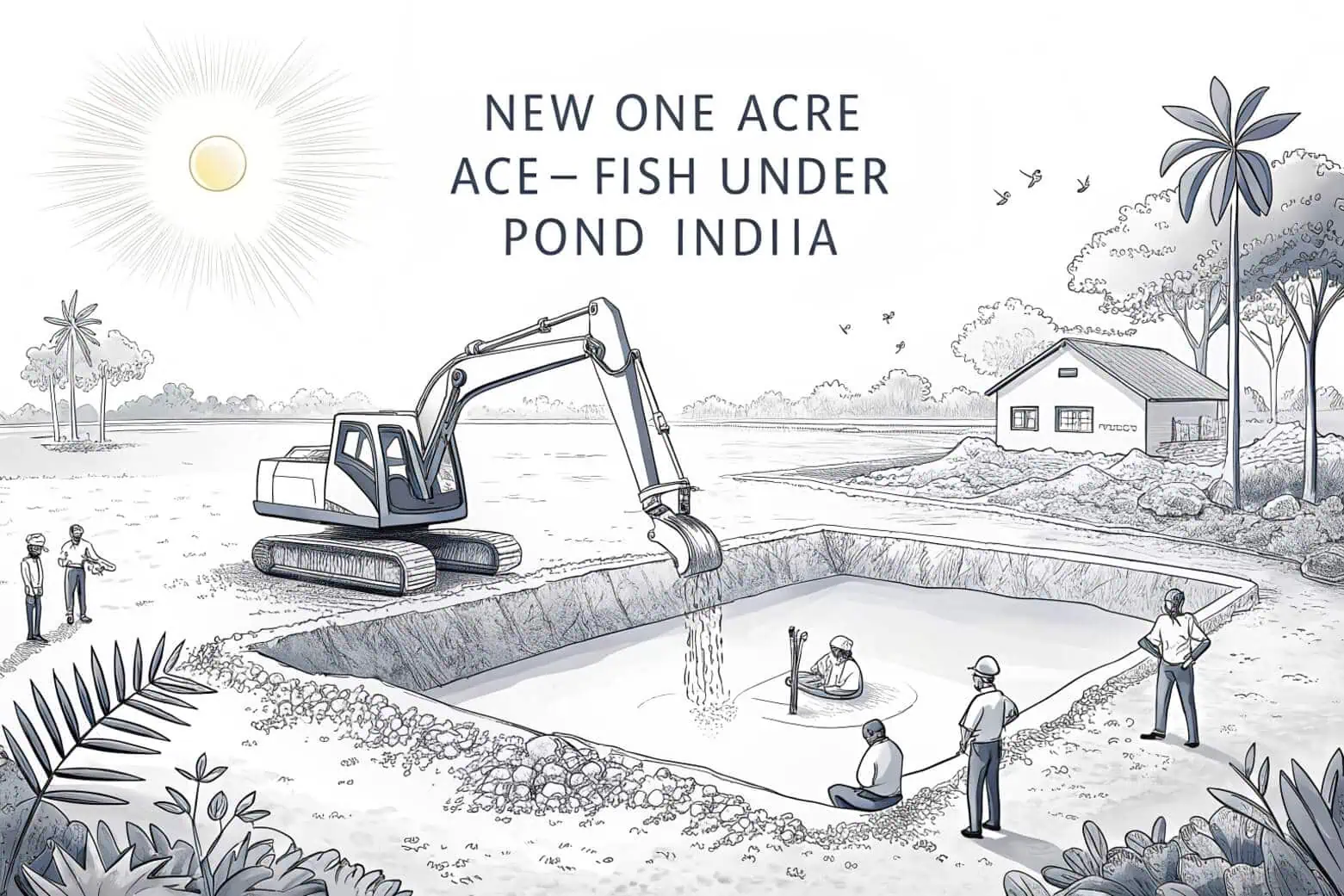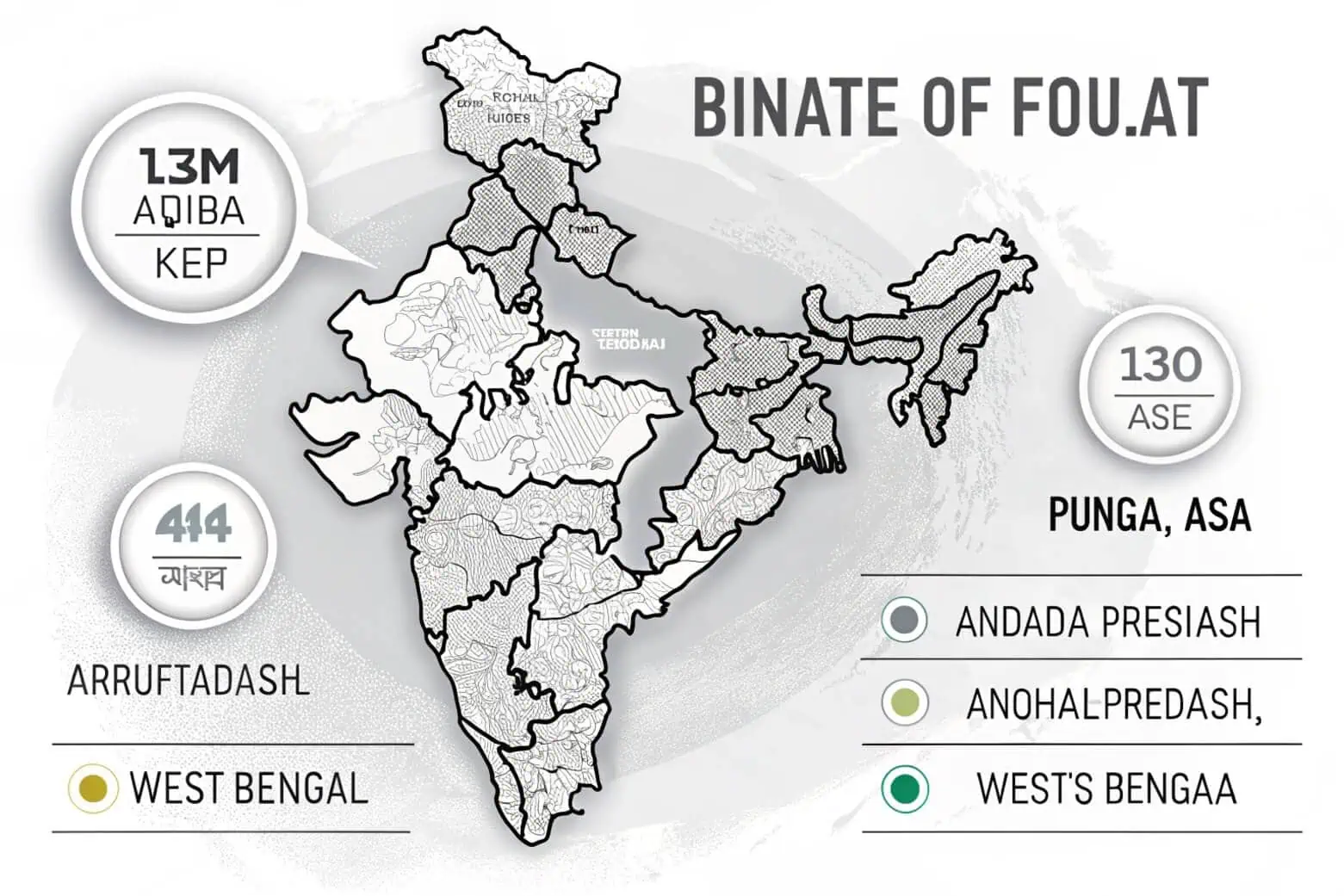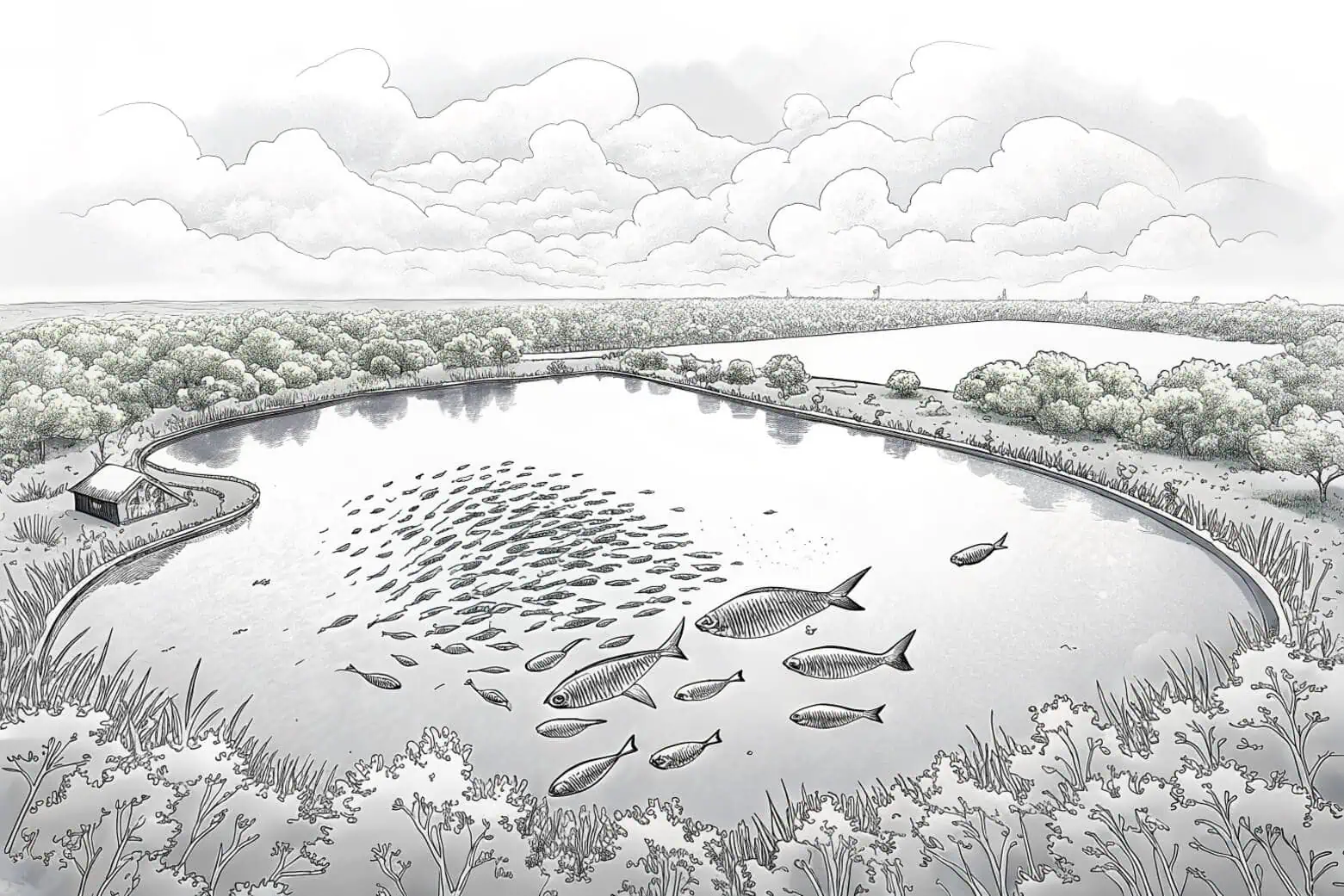How to Start Fish Farming in Punjab?
Starting a fish farm feels like a huge task, right? You see the potential for profit, but the fear of the unknown and making costly mistakes can be paralyzing. This guide will walk you through the essential steps to get started confidently.
To start fish farming in Punjab, you need to secure a suitable piece of land, get the necessary licenses, construct your ponds, and select the right fish species. Proper planning and understanding local regulations are the first steps to building a successful and sustainable aquaculture business in the region.

I remember when I first thought about getting into aquaculture. The idea was exciting, but the path forward seemed foggy. It’s a journey that requires more than just passion; it demands knowledge and a solid plan. In this article, I'll break down everything I've learned to help you navigate this rewarding industry, from figuring out the finances to managing your pond effectively. Let's dive in together.
Is fish farming profitable in Punjab?
Worried that your investment in fish farming might not pay off? It's a common fear that keeps many potential farmers on the sidelines. But with the right strategy, you can turn this venture into a highly profitable business.
Yes, fish farming is very profitable in Punjab. Thanks to strong market demand for fish, favorable government policies, and the region's abundant water resources, farmers can achieve significant returns. Success depends on efficient management, controlling costs like feed, and choosing high-yield fish species.

When I talk to successful fish farmers, they all say the same thing: profit is in the planning1. It's not just about throwing fish into a pond and waiting. You have to think like a business owner. This means understanding your market, managing your resources wisely, and constantly looking for ways to improve. Let's explore what makes this business tick and how you can maximize your earnings.
Understanding Revenue and Costs
Your profit is simply your revenue minus your costs. Revenue comes from selling your fish. The price you get depends on the type of fish, its size, and market demand. In Punjab, species like Rohu, Catla, and Mrigal are always in demand. To get a good price, you need to produce healthy, well-sized fish2. On the other hand, your main costs will be feed, which can be up to 60% of your total expenses, followed by labor, electricity for aerators, and pond maintenance. The key is to find a balance. You want to use high-quality feed to grow your fish quickly but without overspending. I've found that creating a detailed budget from day one is the best way to stay on track.
Government Support and Subsidies
Another big plus for farming in Punjab is the government support. There are often schemes and subsidies available to help new farmers get started. These can include financial assistance for pond construction3, discounts on fish seed and feed, and training programs. I always advise newcomers to visit their local fisheries department. They can provide you with a wealth of information and help you apply for any available support. This can significantly reduce your initial investment and boost your profitability from the get-go.
A Sample Profit Calculation
To give you a clearer picture, let's look at a simple example. The numbers can change, but the logic stays the same.
| Item | Amount (INR per acre) |
|---|---|
| Revenue | |
| Fish Sales (4000 kg) | 480,000 |
| Operational Costs4 | |
| Fish Seed | 20,000 |
| Feed | 180,000 |
| Labor | 50,000 |
| Other Expenses | 30,000 |
| Total Costs | 280,000 |
| Net Profit5 | 200,000 |
How much does it cost to start a fish farm?
Thinking about the startup costs can be overwhelming. You might worry about hidden fees and unexpected expenses that could derail your budget before you even begin. Let's clear up the confusion by breaking down the real costs involved.
The cost to start a one-acre fish farm in Punjab typically ranges from INR 300,000 to INR 500,000. This estimate includes expenses for pond construction, purchasing fish seed (fingerlings), initial feed supply, and setting up basic equipment like aerators. Land leasing costs are a major variable.

I've seen people get scared off by the initial numbers, but it's important to see it as an investment in your future. The costs are real, but so are the returns. The key is to have a clear, detailed budget6. Don't just guess. Research every item, get quotes, and plan for a small contingency fund. A well-planned budget is your roadmap to financial success in this business.
Initial Investment (Capital Costs)
This is your one-time setup cost. The biggest chunk of this will likely be pond construction. The cost for excavating a one-acre pond can vary based on the soil type and labor charges in your area. You'll also need to invest in a water supply system7, like a tube well, if you don't have a natural source. Then there's the cost of equipment. At a minimum, you'll need an aerator to ensure the oxygen levels in your pond are stable, which is crucial for the health of your fish. You might also need nets, testing kits for water quality, and a small shed for storage.
Operational Costs (Recurring Expenses)
These are the costs you'll face regularly once your farm is up and running. As I mentioned earlier, fish feed8 is the most significant operational expense. You'll be buying feed throughout the growing cycle. The next major cost is fish seed, or fingerlings, which you'll purchase at the start of each cycle. Other recurring costs include electricity to run your aerator and pump, labor for feeding and maintenance, and healthcare products for the fish to prevent diseases. I always recommend setting aside a budget for these costs for at least the first six months, as you won't have any income until your first harvest.
Cost Breakdown for a One-Acre Pond
Here’s a more detailed look at what you might expect to spend.
| Expense Category | Estimated Cost (INR) |
|---|---|
| Capital Costs | |
| Pond Construction9 | 150,000 - 250,000 |
| Water System | 50,000 - 80,000 |
| Equipment (Aerator) | 25,000 - 40,000 |
| First Cycle Costs | |
| Fish Seed10 | 20,000 - 30,000 |
| Feed (6 months) | 100,000 - 150,000 |
| Total Initial Cost | 345,000 - 550,000 |
How much does it cost to start fish farming in India?
It's easy to get confused when you see different cost estimates for starting a fish farm across India. You might wonder if the figures for Punjab apply elsewhere, or if you're missing the bigger picture. Let's look at the national perspective to understand the variations.
Starting a one-acre fish farm in India can cost anywhere from INR 250,000 to over INR 600,000. The cost varies widely depending on the state, land prices, labor rates, and the type of farming system you choose. States with more established aquaculture sectors may offer lower costs.

When I expanded my own operations, I quickly learned that what works in one state doesn't automatically work in another. Each region has its own unique set of challenges and opportunities11. Understanding these differences is crucial for anyone looking to invest in fish farming outside of a single area. It helps you create a more realistic budget and business plan that is tailored to the local environment.
Factors Influencing Costs Across States
Why the big difference in cost? First, land prices12. Leasing or buying land in a state like Kerala might be more expensive than in a state like Bihar. Second, labor costs vary significantly from one region to another. Third, the availability and cost of resources like water and electricity can also impact your budget. Finally, the type of fish you decide to farm matters. Some species require more specialized and expensive infrastructure, like the setup for shrimp farming, which is more common in coastal states.
Government Policies and Regional Differences
Different state governments have different policies and levels of support for aquaculture13. Some states offer more attractive subsidies and incentives, which can lower your startup costs. For example, states in the northeast might have special programs to promote fish farming as a source of livelihood. The climate also plays a huge role. In warmer states, fish might grow faster, leading to shorter cycles and quicker returns, but you might also face higher costs for managing water temperature and disease.
Cost Comparison: Punjab vs. Other States
Let's compare some key costs to see the difference.
| Item | Punjab (INR) | Andhra Pradesh (INR) | West Bengal (INR) |
|---|---|---|---|
| Pond Construction14 | 150,000 | 120,000 | 180,000 |
| Labor (Annual) | 50,000 | 40,000 | 60,000 |
| Fish Seed (per acre)15 | 20,000 | 18,000 | 22,000 |
How many fish are in 1 acre pond in India?
Figuring out how many fish to put in your pond is a critical decision. If you put in too few, you're not using your space efficiently. But if you put in too many, you risk disease and slow growth. This uncertainty can be stressful for any new farmer.
In a one-acre pond in India, you can typically stock between 4,000 to 6,000 fingerlings for a standard composite fish culture system. The exact number depends on the fish species, the quality of pond management, and the level of aeration provided to maintain oxygen levels.

I learned this lesson the hard way. In one of my first batches, I was a bit too ambitious and overstocked my pond. The result was a disaster. The fish grew slowly, and I had to deal with a disease outbreak. It taught me that when it comes to stocking density, following the science is non-negotiable. It's about creating a balanced ecosystem16 where your fish have enough space, food, and oxygen to thrive.
Factors Determining Stocking Density
The ideal number of fish isn't random. It depends on several factors. The most important is the species of fish17. Different species have different space and oxygen requirements. For example, air-breathing fish like catfish can be stocked more densely than carp. The type of farming system you use also matters. In an intensive system with high-tech aeration and feeding, you can stock more fish than in a simple, extensive system. Finally, your management skill is key. If you are diligent about monitoring water quality and feeding, you can support a higher density.
Composite Fish Culture
In India, the most common method is composite fish culture18. This involves stocking several different species of fish together in the same pond. The species are chosen so that they don't compete for food. For example, you might have Catla, which are surface feeders; Rohu, which are column feeders; and Mrigal, which are bottom feeders. This system allows you to use all the resources in the pond efficiently and increase your total production. A typical combination in a one-acre pond would be a mix of these three species, along with others like Silver Carp or Grass Carp.
Recommended Stocking Densities
Here is a table to give you a general idea for a composite culture system.
| Fish Species | Feeding Zone19 | Recommended %20 | Number in 1 Acre (Total 5000) |
|---|---|---|---|
| Catla | Surface | 30% | 1500 |
| Rohu | Column | 25% | 1250 |
| Mrigal | Bottom | 25% | 1250 |
| Other | Various | 20% | 1000 |
Conclusion
Starting a fish farm in Punjab is a journey filled with great potential. With careful planning, a solid understanding of the costs, and good management, you can build a successful business.
-
Understanding this concept is crucial for successful fish farming, as it emphasizes strategic planning for profitability. ↩
-
Exploring this resource will provide insights on how to maximize fish quality and profitability. ↩
-
This resource will help you understand the funding options available for pond construction, crucial for new farmers. ↩
-
Exploring strategies to minimize operational costs can significantly enhance profitability in your aquaculture operations. ↩
-
Understanding the factors affecting net profit can help optimize your aquaculture business for better financial outcomes. ↩
-
Exploring this resource will provide you with essential strategies to create a comprehensive budget that ensures financial success. ↩
-
Exploring different water supply systems will help you choose the most efficient option for maintaining your pond's health. ↩
-
Understanding fish feed costs is crucial for budgeting in aquaculture, ensuring your farm's financial health. ↩
-
Exploring this resource will provide you with essential techniques and tips for effective pond construction. ↩
-
This link will guide you in selecting the best fish seed, ensuring a successful aquaculture venture. ↩
-
Understanding regional challenges and opportunities can guide your investment decisions and enhance your business planning. ↩
-
Understanding land price factors can help you make informed decisions about property investments. ↩
-
Exploring this link will provide insights into how aquaculture can be supported by state policies and its economic benefits. ↩
-
Explore this link to understand the various factors influencing Pond Construction costs across different states. ↩
-
This resource will provide insights into the pricing of Fish Seed, helping you make informed decisions for aquaculture. ↩
-
Exploring this topic can help you learn effective strategies for ensuring your fish thrive in a healthy environment. ↩
-
Understanding various fish species and their needs is crucial for successful aquaculture. ↩
-
Explore this link to understand how composite fish culture maximizes pond resources and boosts fish production. ↩
-
Understanding feeding zones is crucial for optimizing fish growth and health in aquaculture. ↩
-
Exploring recommended percentages helps in effective fish stocking and management strategies. ↩